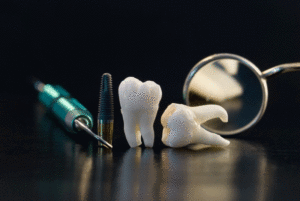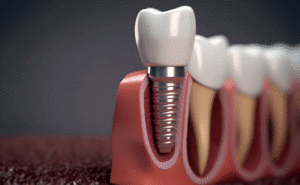Usually when someone comes in for dental work, the last thing on their minds is whether or not – or when – they’ll need to have crowns, veneers and other oral hardware replaced. But, as the saying goes, “nothing lasts forever” and that’s true even with dental work.
So just how long can you expect certain dental work to last before it needs to be replaced? There are a variety of factors that play into this, but generally speaking, patients can expect the likes of crowns and veneers to last for at least 7 years. However, noting that, it’s not uncommon for people to have crowns for two decades – and for such oral hardware to still be in near new condition even after many years of use.
Factors for wear and tear
There are numerous factors that impact the life of a crown or veneer, and thereby how often such work will need to be replaced. Here’s a look at some of them:
- Materials: When it comes to veneers, the two main materials are porcelain and resin. Porcelain veneers typically last longer than their ceramic counterparts, ranging from 10-15 years.
- Habits: Teeth grinding and poor oral hygiene can cause the likes of crowns and veneers to wear faster than normal. For instance, while a crown itself is immune from tooth decay, the tooth that it is applied on isn’t.
- pH Levels: Chemical imbalances within the body can also lead to replacement in dental work, as high consumption of acidic food and drinks can lead to premature wear and tear on crowns and veneers. Many dentists have even begun checking their patients’ saliva with pH strips to help them adjust their diet, and thereby preserve their dental work for longer.
When to seek replacement
While most dental work lasts between 7 and 12 years, there’s still the question of how you know when the time is right to seek replacement. Here’s a look at when you know the time is right:
- Visually unappealing: Dental work can change with time in relation to the rest of the mouth, thereby throwing off one’s appearance. For example, if the gum line of a tooth recedes, then a crown may become more visible. Another example is when the color of a crown changes relative to the color of the tooth.
- Wear and Tear: Often times, it’s obvious when you need a new crown or veneer, as you can tell if one has broken or chipped (or if a veneer has popped off the tooth). But other times, it may not be so obvious. For instance, in the case of someone who is a teeth grinder, excessive grinding can cause holes to form in crowns. These aren’t noticeable to a person, but instead are something that is spotted by a dentist at a cleaning or check-up. If a small hole has formed, a new crown should be administered.
- Dislodging: Very common in veneers, they can pop off or become dislodged. Often times, they can be replaced, but only if there’s enough healthy tooth structure underneath.
So what can you do to prolong the life of your dental work? Simply put, floss and brush regularly and be sure to see your dentist for a professional cleaning once every 6 months. For more information on replacing dental work, contact Caven Dental today.



